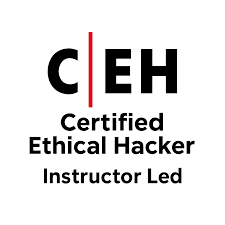Certified Ethical Hacker v9 | CEH v9 Training Vol. 1

The Certified Ethical Hacker (CEH) certification by EC-Council is one of the most recognized credentials in the cybersecurity industry. With the release of CEH v13, EC-Council has significantly upgraded the program to match current industry threats, tools, and techniques. This version builds upon the solid foundation of previous iterations but introduces new content, methodologies, and […]

The Certified Ethical Hacker (CEH) certification by EC-Council is one of the most recognized credentials in the cybersecurity industry. With the release of CEH v13, EC-Council has significantly upgraded the program to match current industry threats, tools, and techniques. This version builds upon the solid foundation of previous iterations but introduces new content, methodologies, and labs to reflect the evolving cybersecurity landscape.
In this article, we’ll explore what’s new in CEH v13, what’s been improved, and why these updates matter if you’re considering earning the certification or upgrading your skills in 2025.
Cyber threats are constantly evolving, and so must the ethical hackers defending against them. CEH v13 is EC-Council’s response to the latest threat vectors, attack surfaces, and hacking methodologies observed across industries. It focuses on real-world attack scenarios, cloud security, IoT vulnerabilities, and the latest in malware and ransomware trends.
By updating the curriculum, EC-Council ensures CEH-certified professionals are equipped with the tools and mindset to proactively identify and mitigate modern threats.
One of the major enhancements in CEH v13 is the deep integration of the MITRE ATT&CK Framework, which maps adversary behavior and provides a common language for attackers’ tactics and techniques. This aligns CEH more closely with real-world incident response and red teaming methodologies.
Professionals now learn to correlate attacks with ATT&CK tactics, improving their situational awareness and decision-making in live environments.
CEH v13 now includes expanded modules on:
These additions reflect the increasing use of sophisticated malware in modern cyberattacks, especially those that avoid traditional antivirus detection.
As cloud computing and IoT devices become more prevalent, CEH v13 places more emphasis on:
The update ensures ethical hackers are capable of dealing with vulnerabilities across hybrid infrastructures.
CEH v13 continues to offer the CEH Practical component, but with significantly improved lab environments. These hands-on labs use EC-Council’s CyberQ platform, which simulates real-world attack scenarios including:
These labs are critical for developing practical skills to support theoretical knowledge.
CEH v13 reflects the latest in ethical hacking tools and techniques, including updates in:
You’ll also find updated guidance on scripts, automation, and real-world usage of Python and PowerShell in penetration testing.
CEH v13 introduces several new or enhanced modules that weren’t prominent in v12 or earlier versions. Notable updates include:
With modern applications heavily dependent on APIs, this module dives into:
Ethical hackers must now learn not just how to attack but how to evade modern defenses, including:
This reflects how advanced adversaries operate in real-world breaches.
While not new, the content has been expanded to include more case studies, advanced phishing techniques, and the psychology behind successful social engineering campaigns.
Threat intelligence is no longer optional—it’s essential. CEH v13 introduces updated lessons on:
This helps bridge the gap between red and blue team operations and encourages ethical hackers to adopt a threat-informed defense approach.
The exam format remains largely consistent, but the question pool and lab scenarios have been updated to reflect the new topics and tools. Candidates can expect:
The CEH Practical (optional but recommended) exam also received a refresh with updated challenge labs.
With the v13 update, CEH now aligns more closely with job roles such as:
The updated curriculum ensures learners are prepared for real-world challenges and better aligned with frameworks like NICE, NIST, and MITRE.
| Feature | CEH v12 | CEH v13 |
|---|---|---|
| MITRE ATT&CK Integration | Limited | Comprehensive |
| Cloud & IoT Focus | Basic | Expanded |
| Malware Coverage | Traditional | Fileless, RaaS, Obfuscation |
| Lab Environment | CyberQ | Upgraded, Advanced Scenarios |
| Tools Updated | Up to 2021 | Updated to 2024 Standards |
| Exam Labs | Optional | Strongly Encouraged via CEH Practical |
To begin your journey with CEH v13, here’s a quick guide:
CEH v13 is not just an upgrade—it’s a strategic shift to make ethical hackers more relevant and effective in modern cybersecurity environments. With better alignment to real-world threats, industry frameworks, and practical skills, CEH v13 is a valuable credential for anyone looking to make an impact in cybersecurity in 2025 and beyond.
To learn more about CEH v13 or to get started with your certification, visit the official EC-Council CEH page here:
https://securevalley-training.net/certified-ethical-hacker-ceh-fr/https://securevalley-training.net/certified-ethical-hacker-ceh-fr/
Get certified with industry-leading cybersecurity certifications from EC-Council, PECB, Palo Alto Networks, and more.

Learn from world-class instructors Collaborate with top professionals Advanced training...

The CEH is the world's leading cybersecurity certification, recognized by...

Onsite training course Led by an instructor Interactive sessions

Asynchronous, self-study environment Video-streaming format Flexible learning schedule
Adding {{itemName}} to cart
Added {{itemName}} to cart

